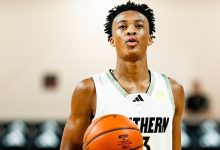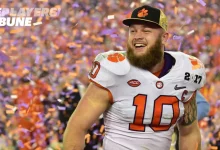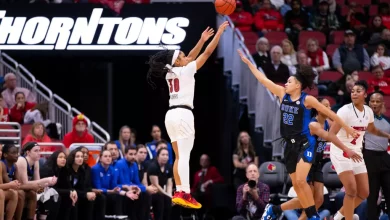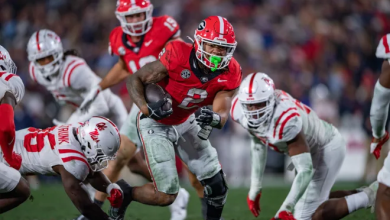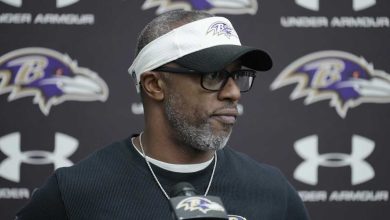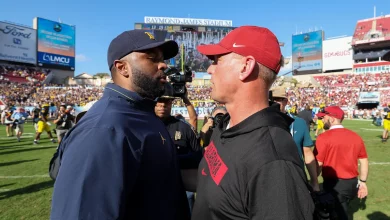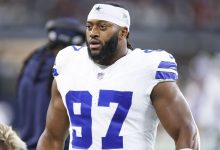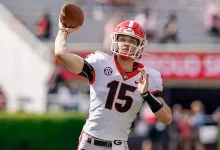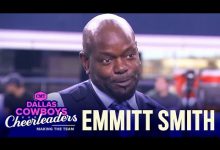More than two decades later, the 2001 Miami Hurricanes are still talked about in legendary tones — not just as one of the greatest college football teams of all time, but as a squad so loaded, so violent, so absolutely unfair, they looked more like a young NFL team in college jerseys.
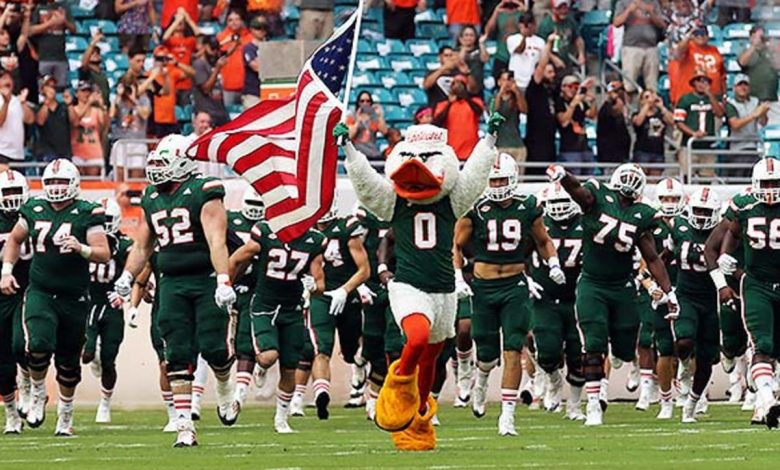
More than two decades later, the 2001 Miami Hurricanes still loom large in college football lore. Not just as a great team, but as the team—a squad so incredibly loaded with talent, so downright violent, and so unfairly stacked that they didn’t merely seem like a college football team; they looked like a young NFL squad in college jerseys. The 2001 Hurricanes were a group of players that transcended what was expected of college athletes, a team whose dominance was so overwhelming that even the most accomplished programs of the time could only look on in awe.
To this day, when you mention the 2001 Miami Hurricanes, you’re speaking of something legendary. From the first snap of the season to their final dismantling of Nebraska in the Rose Bowl for the National Championship, this squad became a benchmark for what a college football team could be. Their resume reads like the stuff of myth, but what sets this team apart wasn’t just its individual greatness. It was the sheer collective force of its talent, a perfect storm of speed, power, discipline, and raw ability, all woven together under the guidance of legendary coach Larry Coker.
But what made them so special?
Let’s start with the talent. When you look at the names on that 2001 Miami roster, you’re practically reading a who’s who of NFL stars. It was a virtual pipeline to the pros, and every position group on the field boasted future NFL players—many of whom would go on to have long and successful careers in the league. The team featured 38 players who were drafted into the NFL, and several of those would go on to become stars at the next level. This wasn’t just a great team—it was an assembly of future Hall of Famers and Pro Bowlers, each one looking more like a pro than a college athlete.
Take the offense, for instance. At quarterback, there was Ken Dorsey, the stoic leader who had ice running through his veins. While Dorsey might not have had the same physical tools as some of the other quarterbacks who followed him in college football, his poise, leadership, and decision-making were unparalleled. He was a quarterback who got the most out of his team and understood how to manage a game while making the occasional jaw-dropping throw. Behind him in the backfield was a future NFL star, Clinton Portis. Portis, with his explosive quickness, vision, and speed, seemed like a player who could break a game wide open with a single run, and he did just that multiple times during the 2001 season.
The receiving corps, led by Santana Moss and Reggie Wayne, was as deep and talented as any group in college football history. Moss, with his jaw-dropping speed and ability to make acrobatic catches, paired perfectly with Wayne, a technician and route runner of the highest order. Both went on to have successful careers in the NFL, but during their time at Miami, they were nearly impossible to cover. In fact, the Miami offense was so potent, so explosive, and so capable of scoring in a variety of ways that opposing defenses simply didn’t have an answer.
But it wasn’t just the offensive skill players that set this team apart; the offensive line was just as dominant. Led by guys like Bryant McKinnie and Vernon Carey, this was a line that paved the way for Portis’ success and kept Dorsey’s jersey clean all season long. McKinnie, in particular, would go on to become one of the NFL’s most dominant tackles, earning multiple Pro Bowl selections. The offensive line was the foundation that made everything else on offense possible—and they made it look easy.
The defense, however, is where the 2001 Hurricanes truly cemented their legacy as one of the greatest teams of all time. What made Miami’s defense so terrifying was its sheer physicality. The ‘Canes didn’t just stop players; they punished them. The defense was fast, aggressive, and ruthless, with every position group filled with future NFL talent. Take a look at their defensive front, where you had future Pro Bowlers like Vince Wilfork and William Joseph, two monsters in the middle of the line, both capable of blowing up the run game or rushing the quarterback with ease.
Behind them, the linebacker corps was equally terrifying, with names like Jonathan Vilma, Dan Morgan, and DJ Williams. These were athletes who could fly to the ball, make plays in space, and destroy offenses with their sideline-to-sideline speed. Vilma and Morgan would both go on to have long NFL careers, with Vilma earning a Super Bowl title with the New Orleans Saints and Morgan being a tackling machine. But it wasn’t just their speed and athleticism that set them apart—it was their mentality. These linebackers played with a violent edge, setting the tone for the rest of the defense.
The secondary was the cherry on top of the cake. Cornerbacks like Mike Rumph, who was a shutdown defender on the outside, and safeties like Ed Reed and Sean Taylor, who were as ferocious as they were skilled, made up a defensive backfield that had the potential to take over a game. Ed Reed, in particular, is widely regarded as one of the greatest safeties to ever play the game, and his ball skills and playmaking ability were on full display in 2001. Taylor, known for his bone-crushing hits and ability to cover ground like few others, would go on to have a Hall of Fame career, but it was during his time at Miami that he truly made his name known.
Together, this defense was like a swarm of bees—constantly moving, attacking, and overwhelming opponents. Their speed was unmatched, and their physicality was downright frightening. When teams lined up against Miami, they didn’t just have to beat the offense—they had to survive the defense, too.
And then there was the coaching staff. Larry Coker, who took over as head coach in 2001 after Butch Davis’ departure, inherited a program that was loaded with talent but still needed the right leadership to truly take that next step. Coker provided that leadership, maintaining the team’s focus and ensuring that the talent was harnessed in the most effective way possible. Offensive coordinator Rob Chudzinski and defensive coordinator Randy Shannon were instrumental in shaping the identity of the team and helping Miami dominate on both sides of the ball. The staff’s ability to get the best out of the talent they had, while keeping egos in check, was a key component of their success.
Miami’s 2001 campaign was a masterclass in football. They went 12-0 in the regular season, outscoring their opponents by an average of 38 points per game. The Hurricanes steamrolled nearly every team they faced, and in the one game where they didn’t blow out their opponent—against Florida State—they still found a way to win, taking a hard-fought, 49-27 victory. And then came the Rose Bowl, where Miami faced off against a Nebraska team that was also undefeated and had a strong pedigree of success. But once again, Miami was on another level. They obliterated the Cornhuskers 37-14, winning the national championship in dominant fashion.
What stands out about that team is how easily they seemed to win. Their dominance was not just in the scoreboard; it was in the way they physically overwhelmed their opponents. They were bigger, faster, stronger, and more skilled than nearly every team they played, and when they played together as a unit, they were nearly unbeatable. Even the best coaches and programs at the time couldn’t figure out how to slow down the ‘Canes.
But beyond their physical prowess and skill, it was the attitude that made this team so special. The 2001 Miami Hurricanes had a swagger that was unmatched. They carried themselves with an aura of invincibility. It wasn’t just about playing well—it was about making sure that everyone knew they were the best, and they showed it at every opportunity. Whether it was Santana Moss’ electrifying punt returns or Ed Reed’s trash-talking and ball-hawking, the ‘Canes played with a chip on their shoulder, daring anyone to challenge them.
In the end, it wasn’t just their talent that made the 2001 Miami Hurricanes one of the greatest teams in college football history. It was the combination of their remarkable skill, physical dominance, and unrelenting mentality. This team was more than just a group of players; they were a phenomenon. The 2001 Hurricanes not only dominated college football—they changed the way people viewed what was possible in the sport. They proved that a college team could be so talented, so fast, and so physical that they could step onto the field and leave no doubt about who the best team in the country was. They didn’t just win—they made history.
Two decades later, the 2001 Miami Hurricanes remain a benchmark, a legend, a squad that still holds a place in the hearts of college football fans and continues to inspire awe. The team may have long since left the field, but its legacy? That will never fade.

